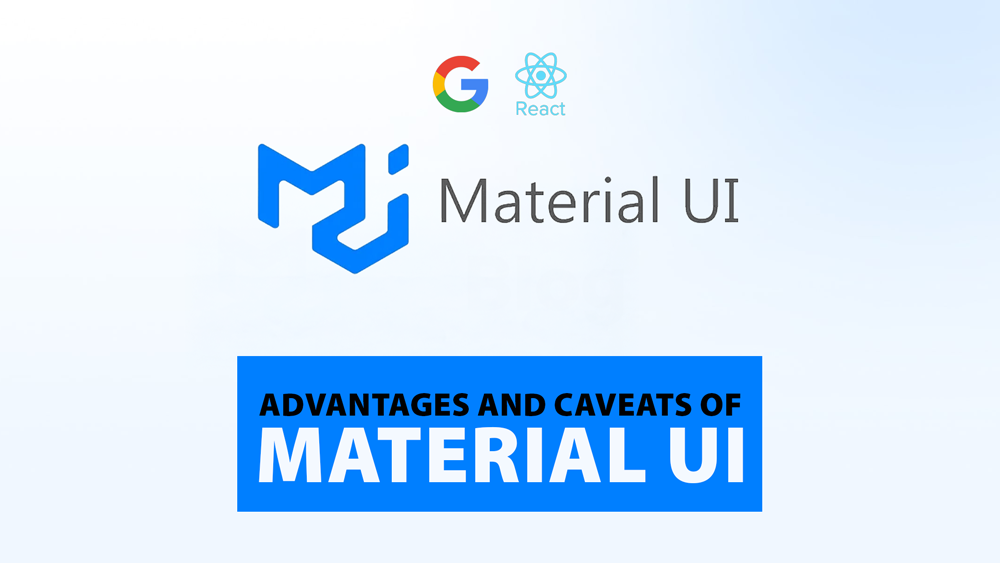Introduction
Material UI (MUI) is a popular React UI framework based on Google’s Material Design principles. It provides pre-built components, theming capabilities, and responsive design features, making it a go-to choice for developers building modern web applications.
This whitepaper explores the key advantages of Material UI, along with some caveats to consider before adoption, ensuring the best SEO reach for developers and decision-makers.
Advantages of Material UI
1. Ready-to-Use, Customizable Components
Material UI offers a vast library of pre-built components (buttons, cards, modals, etc.) that follow Material Design guidelines. These components are:
- Highly customizable via props and CSS-in-JS (e.g.,
sxprop). - Consistent in design, reducing UI/UX inconsistencies.
- Accessible by default, supporting WCAG standards.
2. Responsive and Mobile-Friendly Design
MUI’s Grid system and breakpoint utilities allow seamless responsiveness across devices. Developers can easily adjust layouts for mobile, tablet, and desktop views without extra CSS.
3. Theming and Branding Flexibility
- Dynamic theming via
ThemeProvider. - Dark mode support with minimal configuration.
- Customizable color palettes to match brand identity.
4. Strong Community & Documentation
- Extensive official docs with live examples.
- Active GitHub community (90k+ stars).
- Frequent updates with new features and bug fixes.
5. Integration with React Ecosystem
- Works seamlessly with Next.js, Gatsby, and Redux.
- Supports server-side rendering (SSR) for better SEO.
- Compatible with TypeScript for type safety.
6. Performance Optimizations
- Code splitting for faster load times.
- Tree-shaking support (only import what you use).
- Optimized re-renders with React memoization.
Caveats of Material UI
1. Learning Curve for Customization
While MUI is easy to start with, deep customization (e.g., overriding default styles) may require:
- Understanding CSS-in-JS (Emotion/Styled Components).
- Working with specificity issues in styling.
2. Bundle Size Concerns
- Larger initial bundle size (~500kb minified) compared to lightweight alternatives like Chakra UI.
- Mitigation: Use modular imports and code splitting.
3. Design Constraints (Material Design Limitations)
- Strict adherence to Google’s Material Design may not suit all brands.
- Some components (e.g., Dialogs, Snackbars) follow opinionated patterns.
4. Frequent Breaking Changes
- Major version updates (e.g., v4 → v5) may introduce breaking changes.
- Requires careful migration planning for large projects.
5. Performance Overhead in Complex Apps
- Excessive nested ThemeProviders or styled components can slow rendering.
- Solution: Optimize theming and avoid unnecessary re-renders.
6. Dependency on Material Icons
- Default icons rely on Google’s Material Icons, increasing external HTTP requests.
- Alternative: Use SVG icons or self-hosted icon libraries.
Conclusion: Should You Use Material UI?
Best For:
- ✔ Rapid prototyping & enterprise apps.
- ✔ Teams needing a consistent, accessible UI.
- ✔ Projects requiring strong theming support.
Consider Alternatives If:
- ❌ You need ultra-lightweight solutions (e.g., Tailwind CSS).
- ❌ Your design system doesn’t align with Material Design.
- ❌ Bundle size is a critical concern.
Material UI remains a top-tier choice for React developers, provided its caveats are managed effectively. By leveraging its strengths and mitigating drawbacks, teams can build scalable, visually cohesive applications efficiently.
